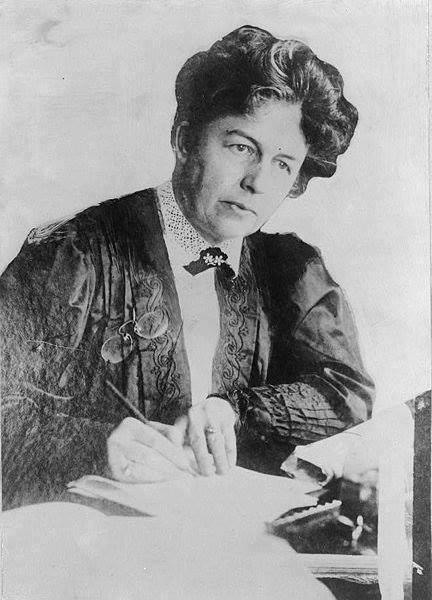April 4, 1907: There was a packed house on hand this evening for a meeting of Harriot Stanton Blatch’s “Equality League of Self-Supporting Women” at New York City’s Cooper Union.

The meeting was every bit as enthusiastic and ambitious as it was crowded. There were three main issues on the agenda and the audience overwhelmingly endorsed taking strong action on all three.
Winning the vote is, of course, the organization’s top priority, so a number of speakers called for woman suffrage. One of them, Rabbi Stephen S. Wise, may have been the only one in the room who had been able to vote for equal suffrage in a State referendum.
He did so while Rabbi of Temple Beth Israel in Portland, Oregon, before recently returning to New York to found the Free Synagogue. He said that we would never have democracy in America until women in all States vote.
Rose Schneiderman, though primarily here to speak of the plight of women who are employed outside the home, offered an observation about anti-suffragists:
“I found out while I was in Albany something that I had not known before, that you have such things as anti-suffragists. These fine ladies stand up and say, ‘Gentlemen, save us from ourselves. We don’t want to vote. We have more womanly work to do. We have charity.’ Charity ! I hate the word. They are the ones who live on charity—they never work. We who provide everything they have are too nice about it.”
Though it had been hoped to add Anne Cobden-Sanderson to the list of speakers who roused the crowd to its endorsement of woman suffrage, she was unable to attend due to still being imprisoned for her activities in England. But the gathering approved a cablegram of support to be sent to those jailed there for their militant actions on behalf of suffrage.
The next issue to be addressed was unionization and equal pay for teachers. Speakers demanded that starting salaries for women no longer be a third less than those for men, and that the maximum salaries for experienced women teachers not be 40 percent less than the maximum salaries for the most experienced men.
Linda Gano noted that despite the pay discrepancy, women are not given cheaper theater tickets or discount fares on public transit.
Joseph Baroness spoke of the need for more assertiveness and unionization by teachers:
“It is not fair to expect women teachers to live on $22.50 per week, but at the same time we should not forget that there are 25,000 girls in this city who are ready to work long hours at anything that will pay them $5 a week.
“Women have the habit of asking too little. An employer said to me once that they were satisfied to take home a couple of dollars to buy a feather for their hats. The women teachers should do as they have done in Chicago, form an organization and get a charter from the Central Federated Union … Organized labor would, I believe, rise to demand equal pay for women teachers.”
With only one dissenting male voice, the equal pay resolution for New York teachers was adopted.
The third issue was that of war and peace. Anne Garlin-Spencer noted:
“The one great product that women have to nourish and protect is the human being. It costs something to produce human life and all over the land at all times women are at the same old job at the same old stand. But the time has come when women are tired of producing cheap cannon food. No man has the right to speak for himself and a woman on the question of peace. He can speak for himself, but he must let the woman speak for herself.”
The resolution giving the League’s respects to the upcoming Peace Congress expressing the hope that women would have a voice in questions of peace and war was quickly adopted.
Harriot Stanton Blatch, the League’s president, has good reason to be pleased with tonight’s turnout and enthusiasm, so more such meetings should be expected in the future.





